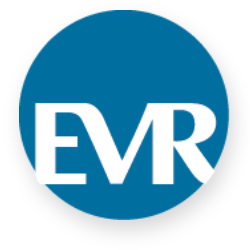If you want to capture leads for your senior living marketing efforts, landing pages and lead forms are the best and most efficient way to do it.
Often, however, too little thought goes into crafting these two vital parts of a lead-generation campaign.
With good planning and extra effort, you can run a lead-generation campaign that brings you the right leads—and a steady stream of new residents.
The Landing Page
The place to start is with the landing page. That’s where your content, form and call to action will all live. Each element plays an important role in a successful senior living lead-generation campaign.
The Length
Your landing page should not be too long, or people will think what you are offering is too complicated. Nor should it be too short; you have to include enough information for people to understand what you are offering them.
Do A/B testing with a longer and shorter version of your landing page to determine the length that’s—as Goldilocks would say—just right.
The Look
Be sure to include a headline that will get a prospect or their adult child’s attention. Make it clear what the offer is and how it can benefit them.
Including a relevant, high-quality image on your landing page helps draw the user in and makes your page more attractive.
When placed next to the lead capture form, an image reinforces just exactly what the prospect will receive.
The Navigation
The sole purpose of your landing page is to get people to convert—that is, to take a specific action, whether it’s asking for more information, scheduling a tour or downloading a brochure.
You want to keep them on the page and not let them get distracted by anything else. Be sure to remove all navigation and links from the page to prevent them from clicking elsewhere.
Put additional links on the thank you page or auto-generated thank you email if you want to include a link to further information, social media or anything else.
The Offer
To get people to convert, you need a compelling offer. The offer itself will depend on where they are in the buyer’s journey.
For instance, prospects in the awareness stage are unlikely to request a tour, but they might want more information about senior living in general.
Examples include information about contract types, levels of senior living and how to assess a senior living facility. By providing useful information, you can reinforce your brand in their mind and help them on their journey.
The Call to Action
Every landing page must have a call to action (CTA) that’s actionable and clear. It should be no more than five words and should be placed both above the fold and at the bottom of the landing page.
Make it clear what the consumer should do next and what they can expect when clicking the CTA button.
It’s simple. If the CTA is “Schedule a Personal Tour,” they will know they are going to a page or form that will allow them to schedule a tour or contact you to schedule a time. If the CTA is “Download Our E-Book,” they know they will get an e-book.
The Lead Capture Form
The lead capture form requires a good deal of thought because it is the most critical component of your landing page. Without it, you can’t get leads.
The Fields
With the lead capture form, you have to find the sweet spot between too many and not enough fields.
Many people are willing to give you basic information—perhaps their name and email—in exchange for something. But your prospect may balk at having to fill out too many fields and abandon the form before they finish.
The very least you should ask for is a name and an email. For senior living advertising campaigns, you might ask an additional question: whether the prospect is looking for themself or a parent.
Do A/B testing to determine the length that works best. However, keep in mind that it can be a tradeoff between quantity and quality.
Completing a short form requires little effort and will bring more leads; completing a longer form may result in fewer leads, but those leads will have higher intent. Thus, they are more qualified and more likely to convert.
As your drip or lead-nurturing campaigns move forward, you can ask for more information. Prospects are more likely to give it if they start to form a relationship with your brand.
The Placement
The common question is, “Where should the form go on the page?” There are two options:
-
- Best is above the fold, which means users don’t have to scroll down to find it. The form can be positioned next to the content, which is the most effective placement.
-
- However, in some cases, you may need to include more text to make the user understand what you are offering before they decide to part with their information. In that case, put a CTA above and below the fold. When clicked, the page automatically scrolls down to the lead form.
The Privacy Policy
People are getting more concerned about giving out their information due to identity theft and some brands’ practice of selling their lead lists. To help reassure them, include a link to your privacy policy somewhere near the form, whether above, below or within it.
The Thank-You Page
Many companies use a pop-up to thank the user for filling out the form. Unfortunately, not only do these waste opportunities, but they are also hard to track.
A better practice is to create a dedicated thank-you page that lives on your website. The thank-you page should come up after someone submits the completed form. Then, you can easily track completed forms by the number of people who landed on the XXXX.com/thank_you page on your website.
If you have a much higher number of users who saw your landing page than reached the thank-you page, you know there’s a disconnect with your form or landing page. Something is preventing them from completing the desired action.
The thank-you page also allows you to offer something else the prospect might be interested in, such as an e-book, brochure or newsletter, or you can invite them to read your blog or like your brand on social media.
It essentially acts as a second landing page and another place to get information from them. For instance, you could ask one extra question related to the offer.
If they download a brochure on activities and programs, you can ask them what activities they are most interested in.
The more information you can add to contacts in your customer relationship management (CRM) system, the easier it will be to create segments for drip mails or lead nurturing.
Friction
Friction occurs when something puts a roadblock before a prospect that slows them down or makes them abandon the form altogether.
To make your lead-generation campaign effective, you must make it as easy as possible for a prospect to understand your message and take the action you want.
Everything from your PPC ads to your landing page to your form should be consistent in tone, branding and messaging so your offer and the user’s expectations match from beginning to end.
A Final Word
Your landing pages and lead forms are the way you will get the lion’s share of your leads, so, as mentioned earlier, it’s worth your time and attention.
Instead of looking at PPC, lead campaigns and social media as separate efforts, consider how they work together for your senior living marketing campaign and ensure your branding is consistent throughout.
Even though landing pages and lead forms are very important, successful digital marketing isn’t about one tactic. Instead, look at campaigns holistically and use several channels that, together, will bring you success.











